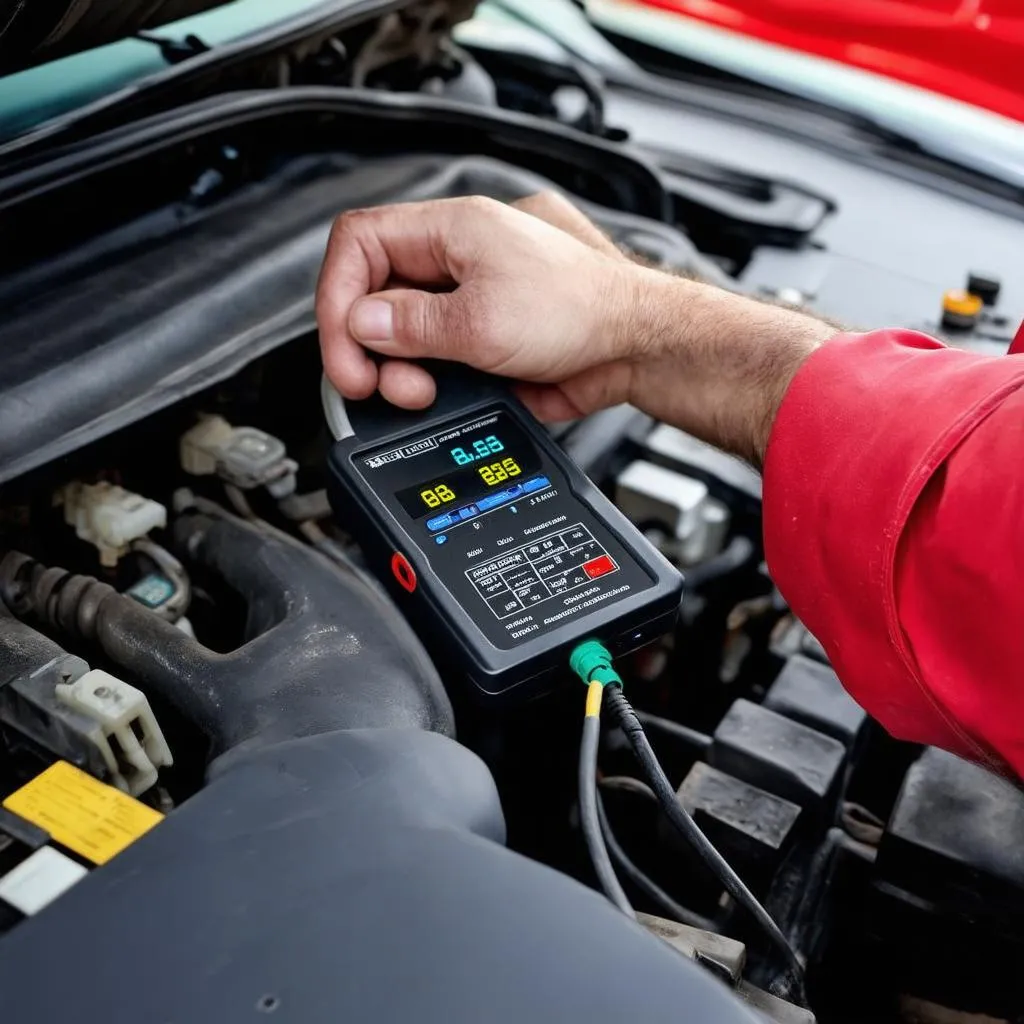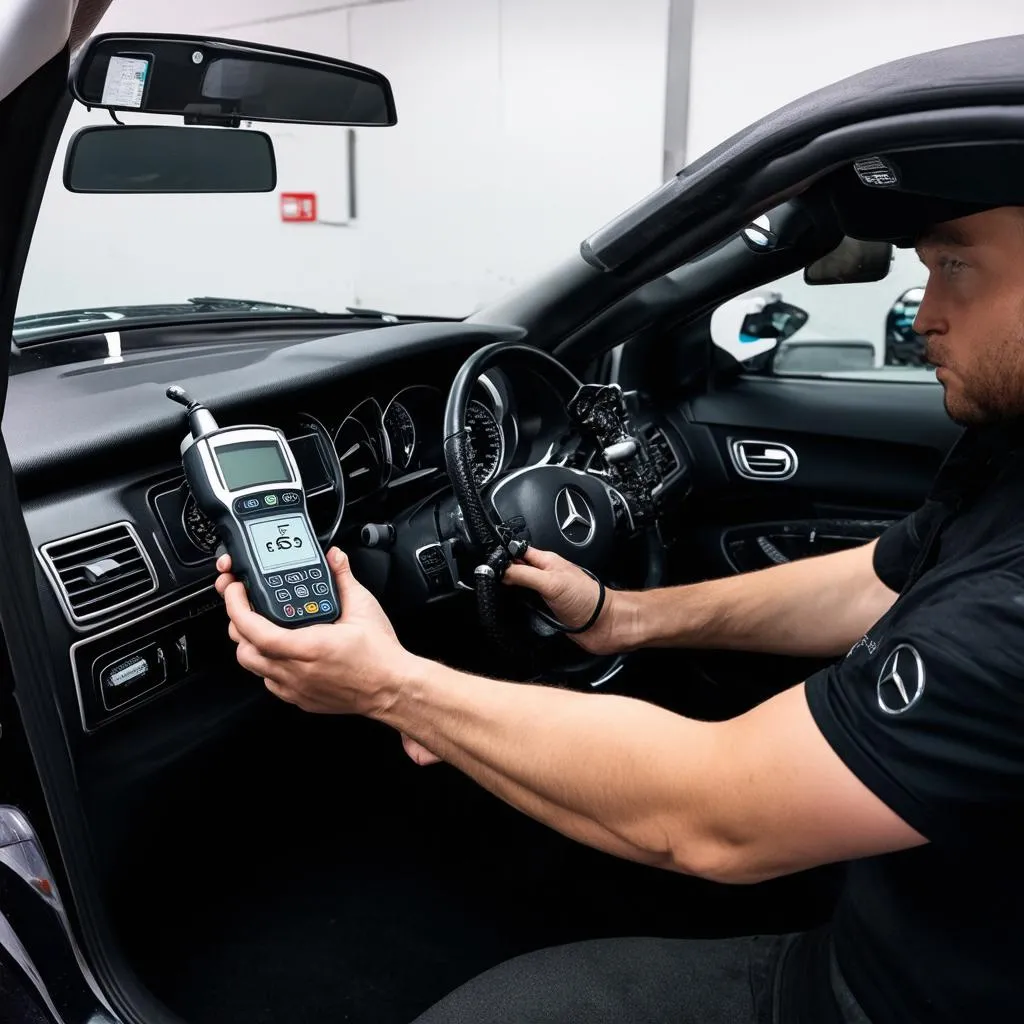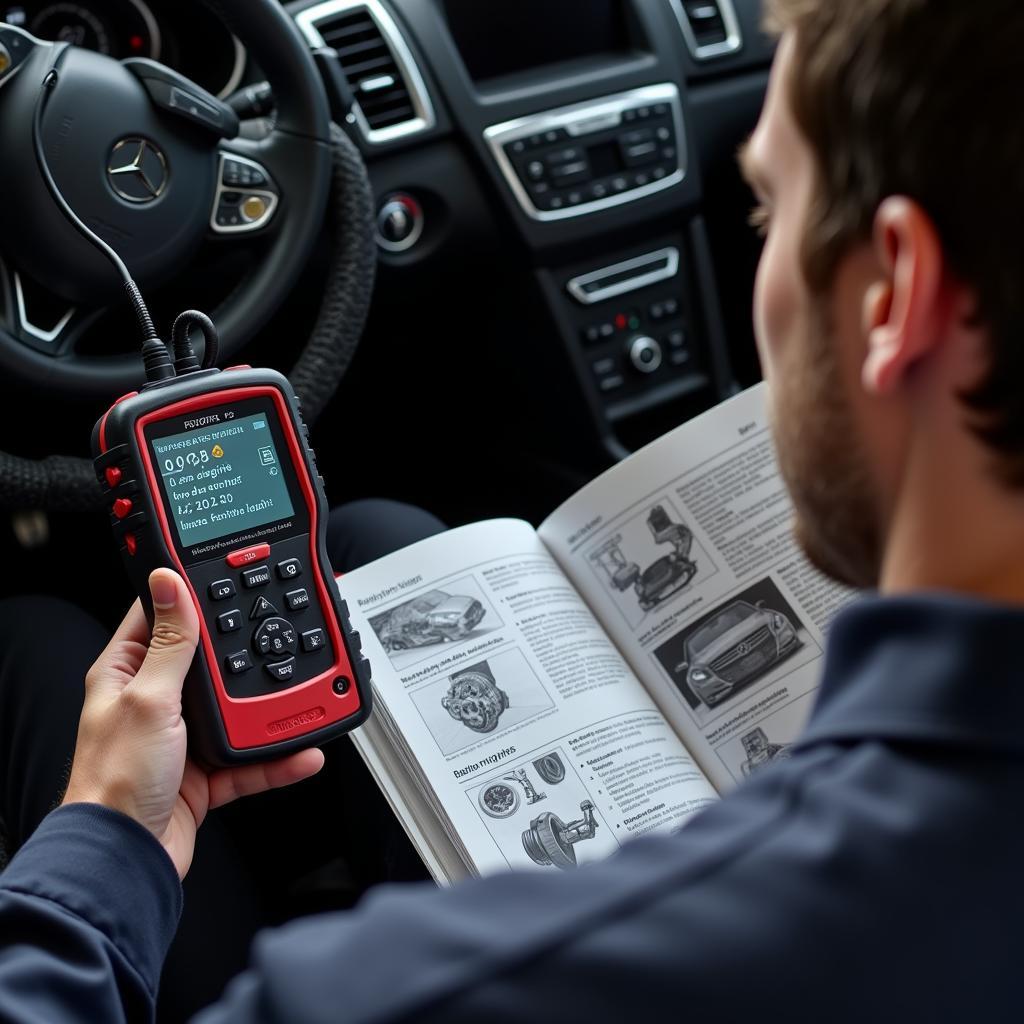Owning a 1995 Mercedes-Benz is a testament to classic taste. However, even these automotive legends require occasional attention, especially when it comes to diagnostics. Enter the 1995 Mercedes diagnostic module, your key to understanding and resolving issues with your prized vehicle.
The Significance of Diagnostic Modules in Your 1995 Mercedes
Before we delve into the specifics, let’s establish the role of a diagnostic module. It acts as your car’s internal communication hub, collecting data from various sensors and systems. When your check engine light illuminates, the module stores a specific code related to the potential problem.
“Think of the diagnostic module as the car’s brain,” says automotive engineer Dr. Emily Carter, author of “Automotive Electronics Decoded.” “It doesn’t just detect issues; it helps pinpoint the source for efficient repairs.”
Locating and Understanding Your 1995 Mercedes Diagnostic Module
In most 1995 Mercedes models, the diagnostic module, often referred to as the ECU (Engine Control Unit), is located beneath the hood, typically on the passenger side. It’s a rectangular, metal box with various wires connected.
Note: The exact location may vary depending on the specific model of your 1995 Mercedes. Refer to your owner’s manual for precise guidance.
Common Issues and Troubleshooting
Over time, diagnostic modules can experience issues like:
- Corrosion: Exposure to moisture can lead to connection problems.
- Software glitches: Occasional malfunctions can disrupt data processing.
- Component failure: While less common, internal faults within the module can occur.
Troubleshooting Tips:
- Check the fuses: A blown fuse might disrupt power to the module.
- Inspect for visible damage: Look for loose connections, corrosion, or physical damage.
- Consult a professional: For complex issues, seeking expert help is recommended.
 1995 Mercedes Diagnostic Module Location
1995 Mercedes Diagnostic Module Location
Utilizing Diagnostic Tools
To read the codes stored in your 1995 Mercedes diagnostic module, you’ll need a compatible diagnostic tool. These tools range from basic code readers to advanced professional scanners.
“A good diagnostic tool can save you time and money in the long run,” advises master mechanic Michael Thompson. “It empowers you with the knowledge to address minor issues or make informed decisions when seeking professional help.”
 Using a Diagnostic Tool on a 1995 Mercedes
Using a Diagnostic Tool on a 1995 Mercedes
Cardiagtech: Your Partner in Mercedes Diagnostics
For reliable and user-friendly diagnostic solutions, explore the range of products offered by Cardiagtech. They provide tools tailored for various Mercedes models, including those from 1995.
FAQs
Q: Can I drive my Mercedes with a faulty diagnostic module?
A: While you might be able to drive, it’s not recommended. Ignoring a faulty module can lead to more serious problems and potentially leave you stranded.
Q: Can I replace the diagnostic module myself?
A: It’s possible, but requires technical expertise. If you’re not comfortable working with automotive electronics, consulting a professional is advised.
Q: How often should I have my 1995 Mercedes diagnosed?
A: It’s a good practice to have your vehicle diagnosed annually, or if you notice any unusual performance issues.
In Conclusion
The 1995 Mercedes diagnostic module is a vital component for maintaining the health and performance of your vehicle. Understanding its role, common issues, and available diagnostic tools can help you keep your Mercedes running smoothly for years to come. Connect with CARDIAGTECH for any assistance or to explore their range of diagnostic products.


